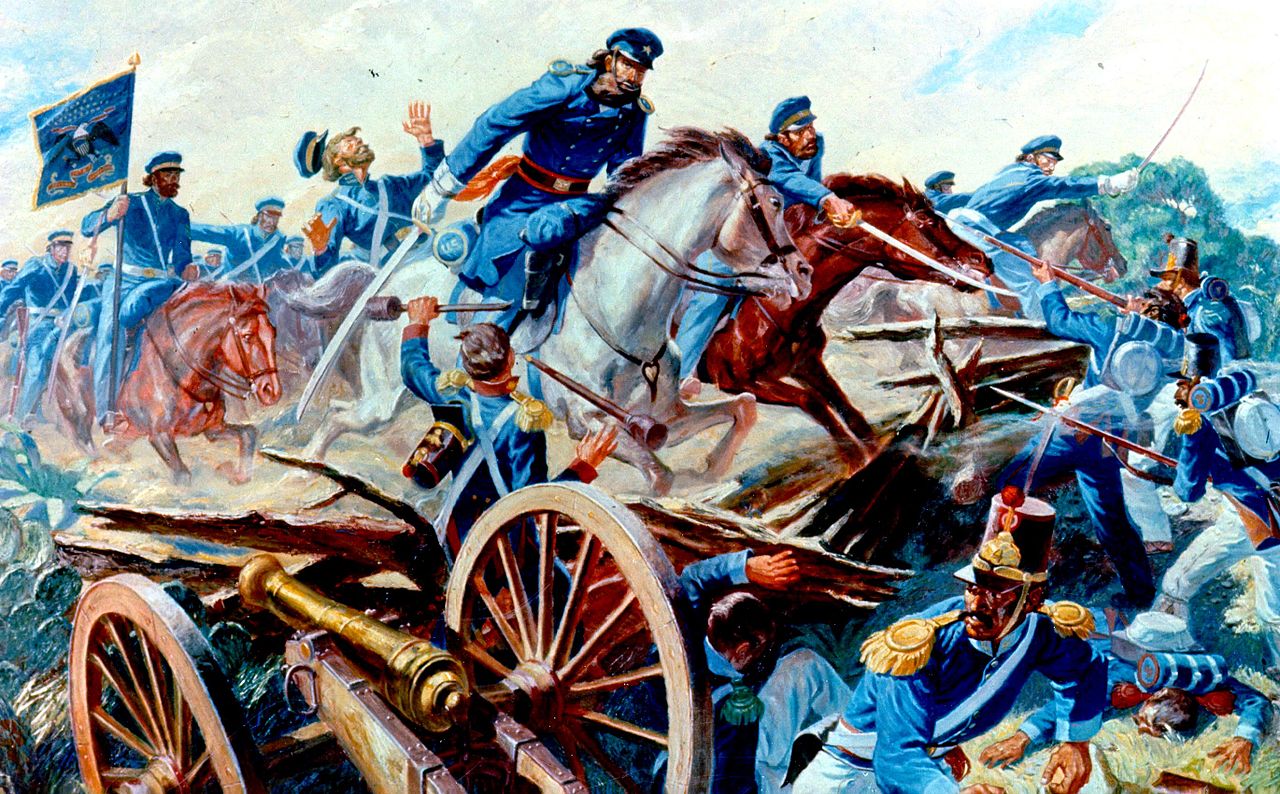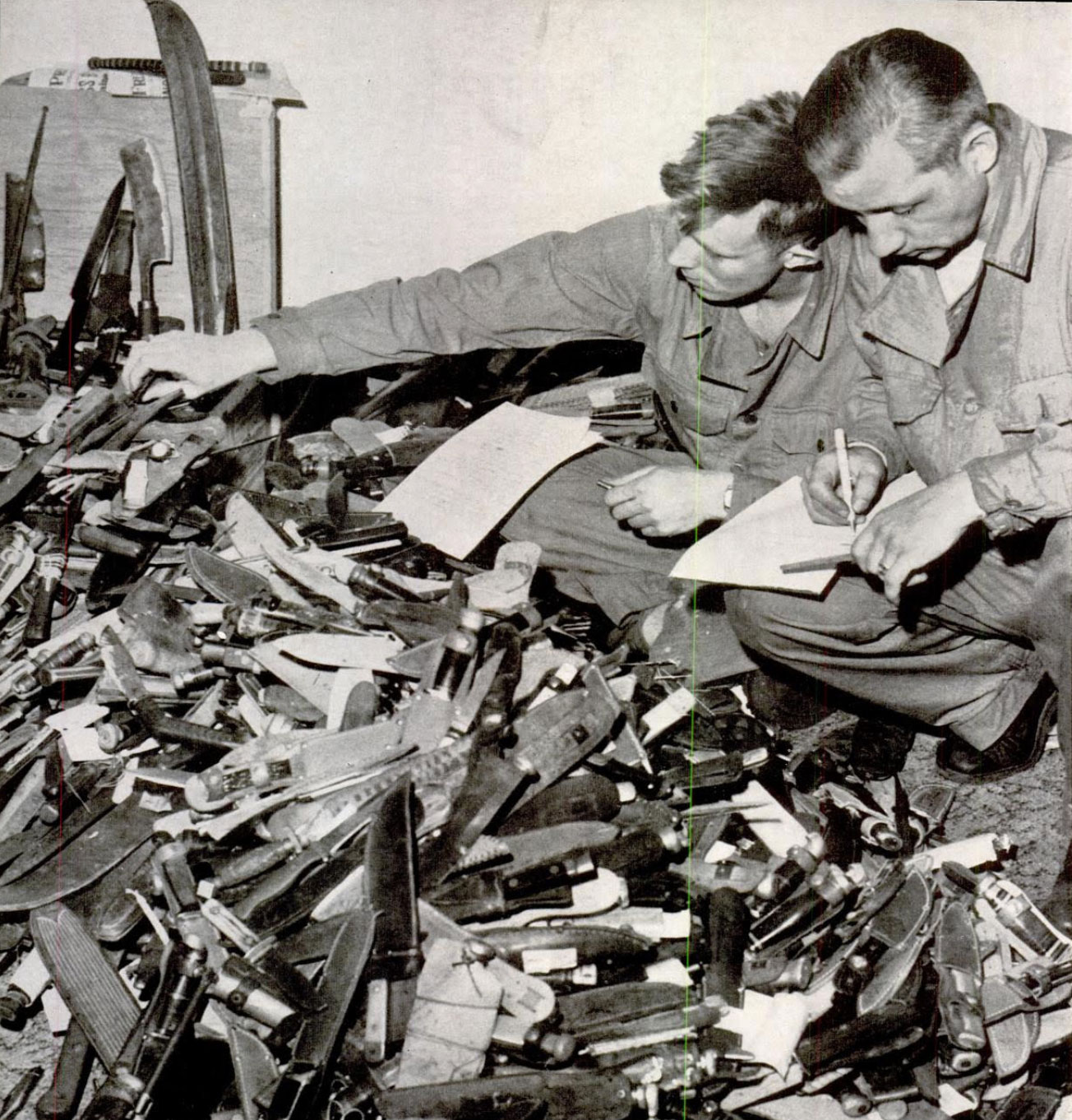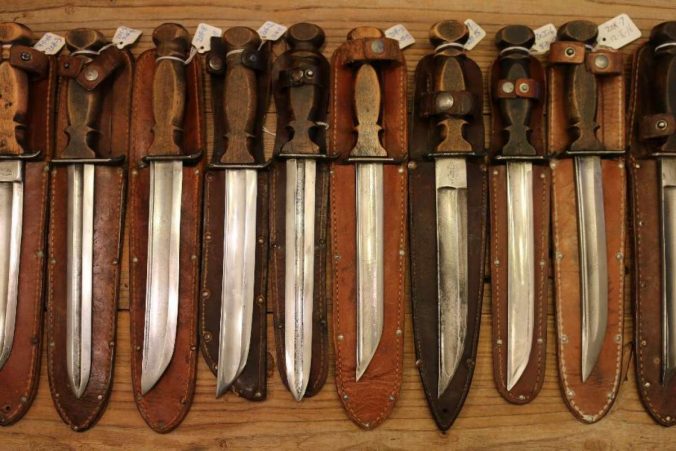World War II was the biggest and deadliest war in history.
Most people are aware of the role knives played in the war — millions of fixed blades were carried by soldiers who fought so valiantly for freedom.
For Armed Forces Day in 2018, Blade Magazine took a look back on many of the fixed blades carried during the Second World War.
However, the San Antonio Express-News recently explored a lesser-known aspect of knives during WWII after someone asked about mysterious knives labeled “San Antonio Iron Works.”
It turns out these were likely makeshift knives made from historical sabers issued to cavalry, including the George Patton-designed 1913 cavalry saber — the last to be issued to cavalry. Apparently swords were no match for guns starting in the World War I so they stopped issuing them.

A cavalry depicted in the Mexican War
But all these historical swords lying around were put to use during WWI. Here’s an excerpt from the San Antonio Express-News article:
At the start of World War II, “there was a great need for fighting knives,” said John Manguso, former director of the Fort Sam Houston Museum and author of several books about the historic Army post. Besides those made by arsenals and by cutlery and farm implement manufacturers, he said, “The Army elected to take some of its inventory of swords stored away and make them into fighting knives.
“Typically, a sword blade was cut into three pieces, and a tang (the portion that extends down into the handle) and point were fashioned onto each piece,” Manguso said.
Looking at a photograph of the SAIW knives, Manguso identified them as having been made from a 1913 Patton cavalry saber, possibly 1840 dragoon sabers or 1860 light cavalry sabers.
“With the San Antonio Arsenal here,” he said, “it is likely a lot of this type of work was done there and contracted out to local shops.”
While it’s sad to see many of the old swords from as far back as the U.S.-Mexican War, it’s great to hear they were repurposed into knives that potentially saw action.
Save a Life with a Knife Committee
One of my favorite factoids from the article was about the Save a Life with a Knife Committee. Along with turning old swords into new knives for combat, a committee was set up to receive knives from the public to be sent to troops who needed them.
During the war, a night-club owner in San Francisco named Frank Martinelli heard that knives were of urgent need in the southwestern Pacific.
Here’s more:
Moved by the stories he heard from customers, he started by clearing a hardware store’s shelves of knives, wangling more from his friends and convincing popular bandleader Kay Kyser to spread the word on the radio. The longtime North Beach impresario threw in three knives of his own.
Martinelli’s anecdotal evidence apparently had enough basis in reality that he received approval for his committee from Army Maj. Gen. Barney McKinney Giles, a Texas native who had served at Kelly Field and as of July 1942 had organized and commanded California’s 4th Air Service Command. The unlikely allies — nightclub operator and career officer — struck a deal: They would cooperate on publicity for the knife drive, Martinelli would store the spoils in a back room at his Bal Tabard club and military planes would speed them overseas.
The two created the Save a Life With a Knife Committee that received 7,500 knives, according to the Feb. 8, 1943 edition of Life Magazine.

Screenshot of an image from Life Magazine
As you can probably imagine, people sent in all kinds of knives, such as butchers knives, stilettos, and scimitars. I imagine many of these knives were unusable in battle, which is probably why the War Production Board advised against sending soldiers knives because “Many of these (machine-shop) knives made from second-hand steel have flaws, too. When a soldier reaches a combat zone, the army issues whatever knife is needed — and no flaws in it.”
I haven’t been able to find out much more about whether the knives from the committee were actually sent or used by troops in the Pacific theater.
It’s a cool bit of history and a small reminder of the sacrifices people made back in the day to help the war effort in any way they could.
If you have any additional info, please feel free to share it.






Leave a Reply